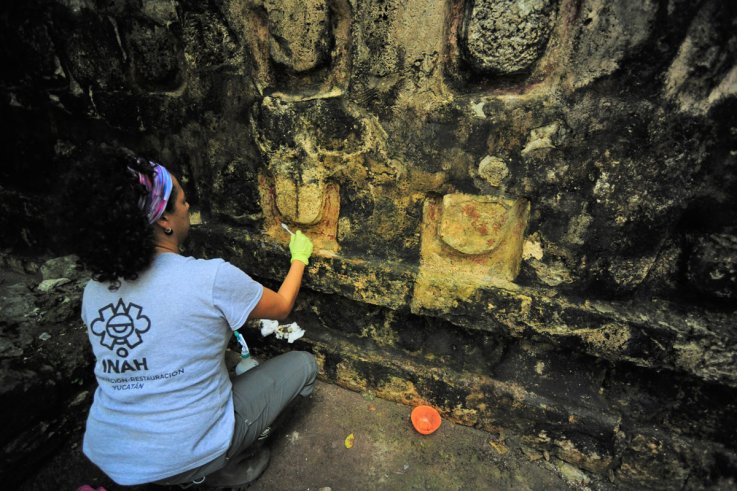LARGE MAYAN PALACE DISCOVERED IN THE MIDDLE OF THE MEXICAN JUNGLE
An ancient Mayan palace has been discovered in the middle of the Mexican jungle in Yucatán state, near the historic city of Kulubá.
Mexico's National Institute of Anthropology and History (INAH) announced the news in a press release on December 24, 2019.
The centuries-old construction stands 55 meters long, 15 meters wide and 6 meters high. Archeologists have found stairways, pilasters (ornamental pillars) and a basement at the site.
According to experts, the materials suggest the palace was occupied twice—once in the Late Classic period (600–900 CE) and again in the (overlapping) Terminal Classic period (800–1050 CE).
It was during the Terminal Classic period that Chichén Itzá extended its influence over sites such as Kulubá, becoming a prominent metropolis in the region, Alfredo Barrera Rubio, an archeologist involved in the excavation, said in a statement. Ceramic materials found in the region suggest Kulubá became an Itzá enclave.
Today, Chichén Itzá is one of the most visited archeological sites in Mexico. It features the famous "El Castillo" (the castle) and was elected one of the new seven wonders of the world, alongside the Great Wall of China and the Taj Mahal in India.
Archeologists are currently excavating the area around the nearby city of Kulubá, in southeast Mexico. According to The Yucatan Times, the ancient metropolis boasts temples up to 80 meters high. To put it into perspective, that is roughly as tall as a 24 story building or nine-tenths the size of the Statue of Liberty.
The Mayan civilization lasted almost 2,000 years before its collapse—an event that may have been brought on (or exacerbated) by climate change, according to research published by the World Economic Forum.
The Mayans came from Yucatán but during its height, their empire extended its influence to parts of Mexico, Guatemala, Belize and Honduras.

They are known for their scientific and astronomical skill, the construction of giant stone monuments and 2012 end-of-the-world prophecy (which—spoiler—did not come to pass). The Mayans were highly skilled farmers and craftspeople, who developed a complex irrigation system to survive the region's harsh climate. It was also a highly hierarchical society built on sacrifice and subservience to the nobility.
The archeological site near Kulubá sits in the middle of a jungle, which makes it vulnerable to weathering and so floors and sacrificial coatings have been added to protect the palace's original finishings.
Several other finds of archeological importance have been discovered near the palace, including an alter, two residences and a round construction thought to have been an oven. According to IHNAH, public visits to Kulubá are expected to commence in the "medium term."